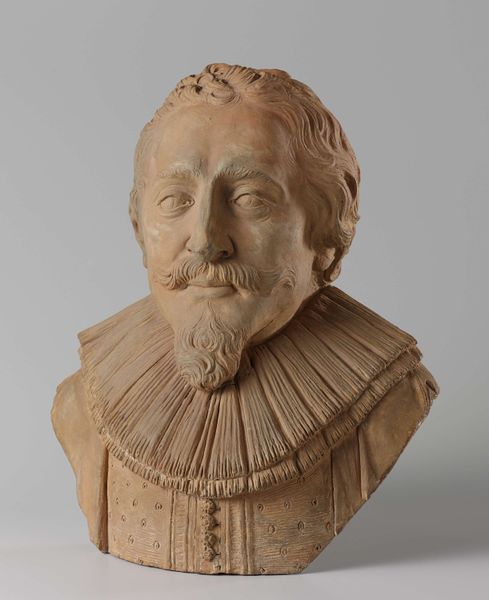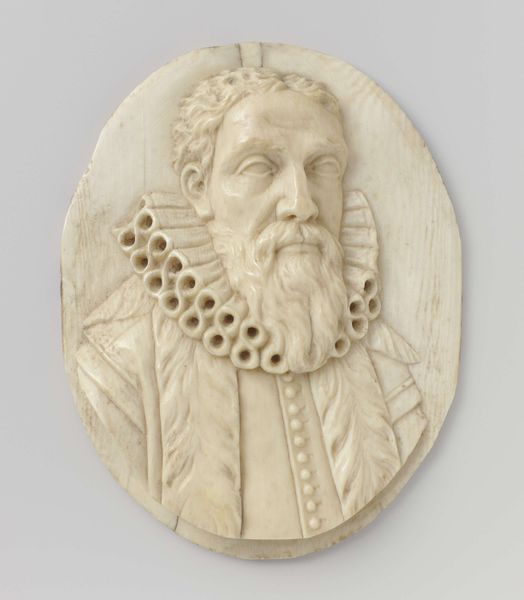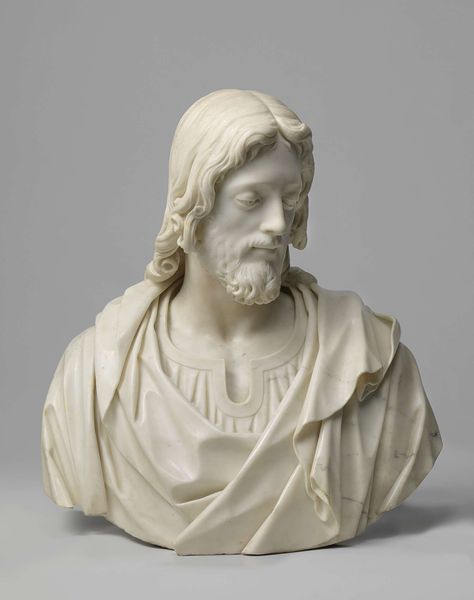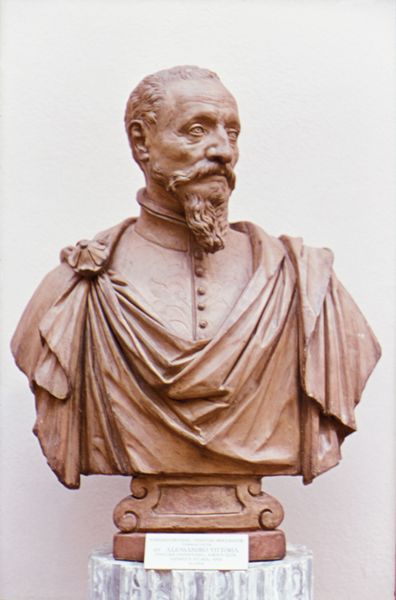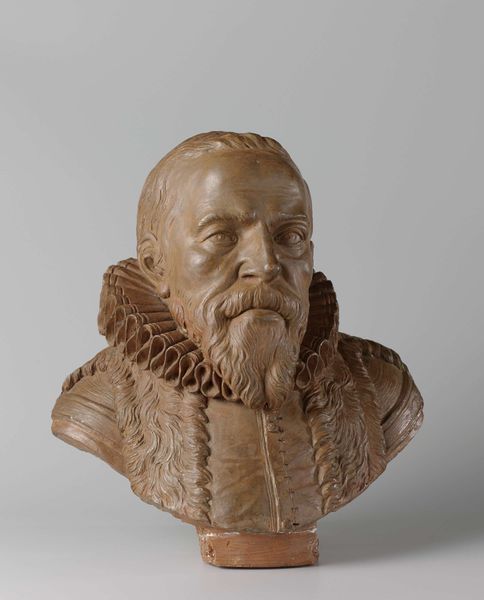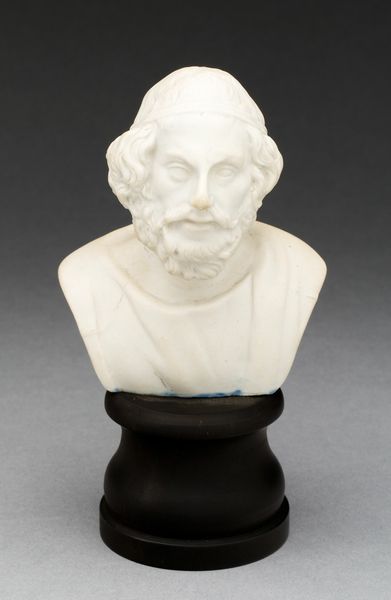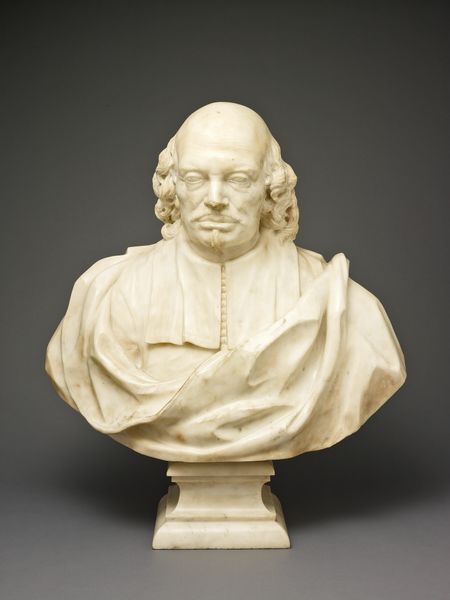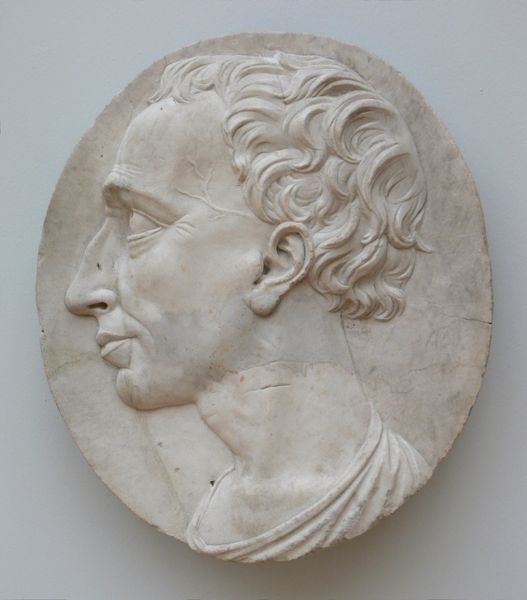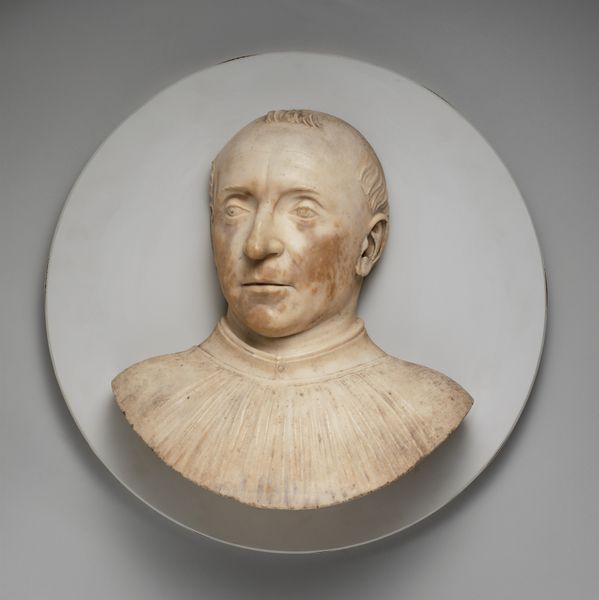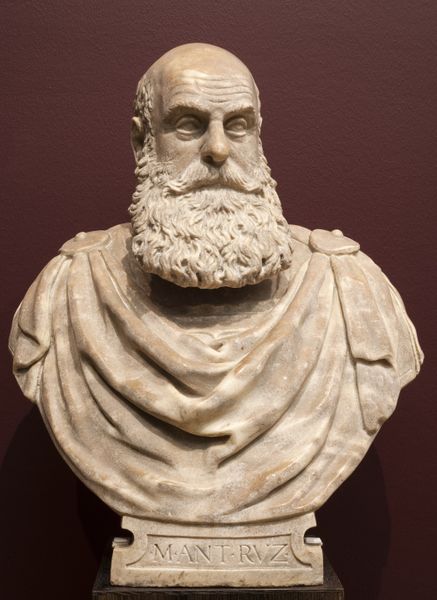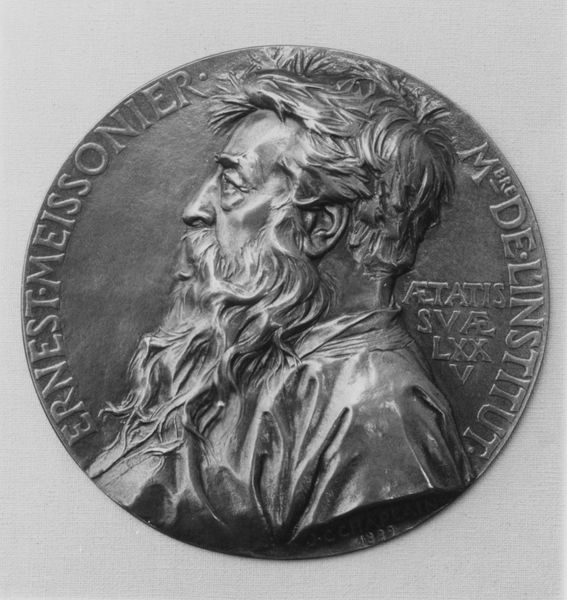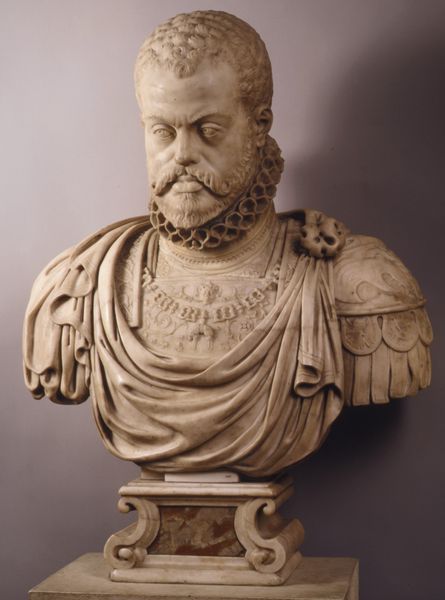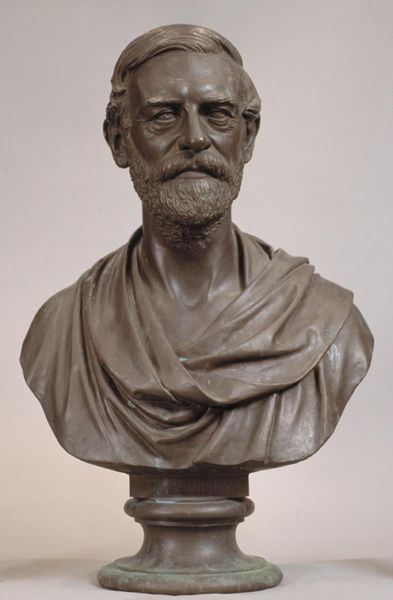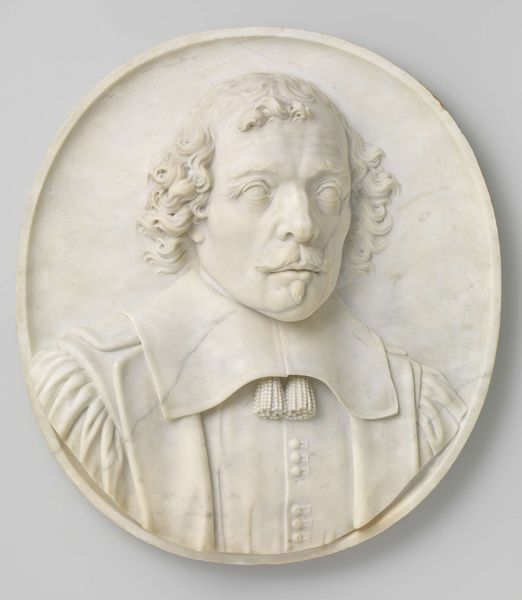
relief, sculpture, ivory
#
portrait
#
baroque
#
stone
#
sculpture
#
relief
#
sculpture
#
ivory
Dimensions: height 10.8 cm, width 8.4 cm, depth 1.4 cm
Copyright: Rijks Museum: Open Domain
Editor: Here we have an ivory relief sculpture, "Portrait Medallion of Hugo Grotius," made around 1735-1750 by an anonymous artist. It's quite small, and something about the texture of the ivory gives it a subtle warmth. What do you see in this piece? Curator: Immediately, the precise execution of the carving strikes me. Note the artist's delicate handling of the ivory to delineate form—the precise curls of the hair, the intricate folds of the ruffled collar. Editor: It's almost photorealistic in its detail! Curator: Indeed. However, this realism is achieved not through color or brushwork, but through the sculptor's masterful manipulation of light and shadow on a monochrome surface. The relief itself becomes the mechanism for representing depth and volume. The artist understands how light will interact with the curved surfaces, predicting how it will reveal the portrait's dimensionality. The surface's tonality plays an important role in interpreting the subject. Editor: So it's less about who Hugo Grotius *was* and more about *how* the artist chose to portray him? Curator: Precisely. The formal qualities are what dictate our experience. Notice the oval format too – how does the shape constrain and contribute to your experience of viewing this work? Editor: That’s a great question. Now that I look at the form and shapes, I'm noticing other elements of the sculpture that I did not observe earlier! Thanks for the insights. Curator: My pleasure. These meticulous observations regarding its artistic features open a way to the period's aesthetics, isn't it?
Comments
No comments
Be the first to comment and join the conversation on the ultimate creative platform.
